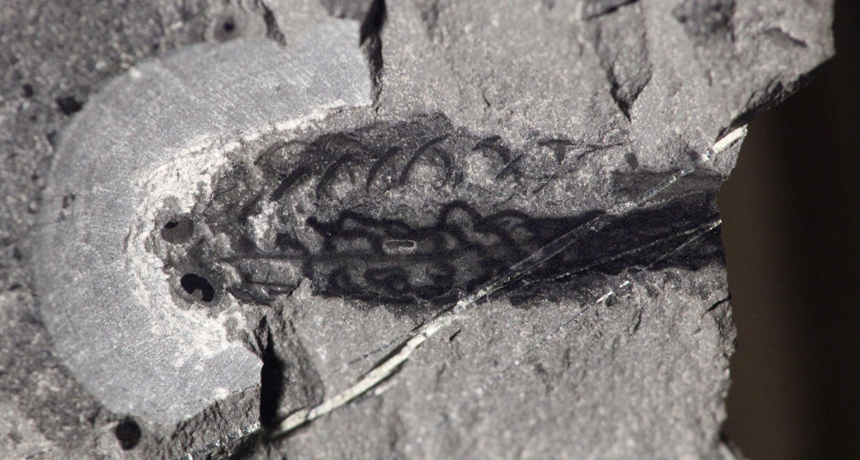Ancient fish may have set stage for jaws
New fossils reveal gills possibly on their way to chomping on prey

FRESH CATCH Fossils of Metaspriggina walcotti suggest that the primitive fish, which was roughly 6 centimeters long, had front gill bars that may have served as a precursor to the jaw. The gill bars, structures that supported the fish’s gills, appear as dark stitches.
Jean-Bernard Caron © ROM







